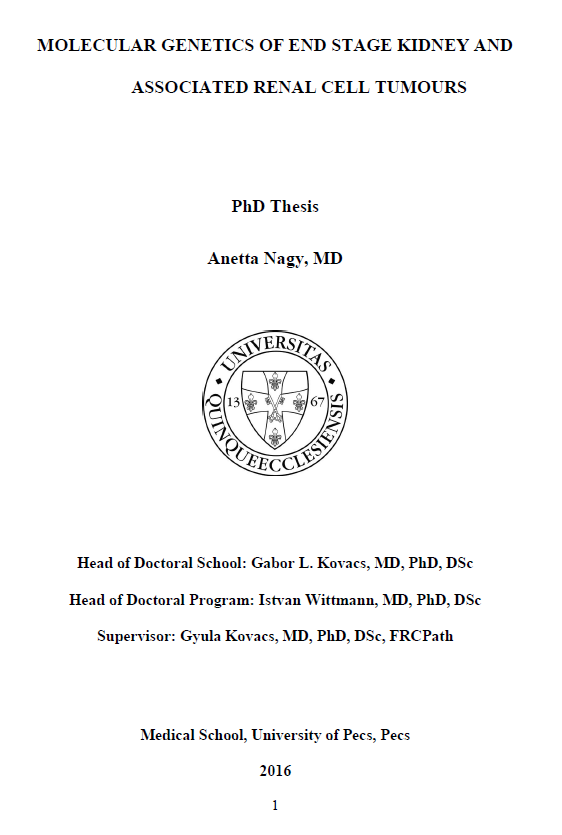Molecular Genetics of End Stage Kidney and Associated Renal Cell Tumours
Abstract
The term end-stage renal disease’ (ESRD) reflects a clinical condition in which there has been an
irreversible loss of endogenous renal function, of a degree sufficient to render the patient
permanently dependent upon renal replacement therapy (RRT) - dialysis or kidney transplantation -
in order to avoid life-threatening uremia. ESRD is a substantial burden on health care systems, the
associated high morbidity and mortality rates and high medical expenditures make it important from
a public health perspective.
The prevalence of ESRD still increases worldwide. This is influenced by several factors (e.g.
improved overall survival of patients at higher risk for ESRD, more liberal entry into and better
survival on RRT), of which the global epidemic of type 2 diabetes mellitus, the increasing tendency
of hypertension and the ageing of the general population are especially emphasized. The growth
rates in dialysis and transplant patient numbers of 6-7% were observed for years of the 2000s and
significantly exceeded the annual growth rate of 1.2% of general world population. In the United
States, the number of patients treated with RRT was nearly 500.000 in 2005 (approximately 1.9
million worldwide) and based on estimations of United States Renal Data System (USRDS) it is
projected to increase to more than 750.000 by 2020.

